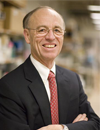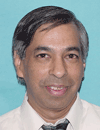Donald Hunt
Professor, University of VirginiaProfessor Donald F. Hunt joined the faculty at the University of Virginia as an assistant professor in September, 1968 and currently holds the rank of University Professor with appointments in both Chemistry and Pathology. He has now taught organic chemistry to more than 15,000 premed students. He is the recipient of numerous awards including: Virginia's Outstanding Scientist, the Pehr Edman Award, the Distinguished Contribution Award from the American Society for Mass Spectrometry, the Christian B. Anfinsen Award from the Protein Society, the Chemical Instrumentation Award and the Frank F. Field and Joe L. Franklin Award from the American Chemical Society, the Thomson Medal from the International Mass Spectrometry Society, Distinguished Accomplishment Awards from the Human Proteome Organization (HUPO) and ABRF, the Distinguished Scientist Award at the University of Virginia, and the School of Medicine Dean’s Award for Excellence in Team Science. He is a co-inventor on more than 25 patents and patent applications and has more than 390 scholarly publications to his credit. His h-index of 88, (88 papers with 88 or more citations) ranks him among the top 130 living chemists in the world. Professor Hunt is a consultant to Thermo Fisher Scientific Corp, CEO of PhosImmune Inc, and a member of the American Academy of Arts and Sciences . |  | | | Haroun Shah
Head, Public Health EnglandProfessor Haroun N. Shah obtained his PhD from the University of London in 1981 (Microbial Biochemistry, MRCPath (1990) and FRCPath (1996). His work commenced in the Department of Biochemistry which led a major thrust in the 1980s into the development of separation and analytical techniques to study the architecture of bacterial cells, metabolism and mechanisms of pathogenicity in anaerobic bacteria that colonised the alimentary tract of man (see eg H. N. Shah and S. E. Gharbia (2011). ‘A century of systematics of the genus Bacteroides: from a single genus up to the 1980s to an explosion of assemblages and the dawn of MALDI-TOF-Mass Spectrometry’. BISMiS. 2. 87-106). Professor Shah held senior academic appointments at The University of London for 25 years with intermittent periods (2-3 years) in Canada and the Middle East. In 1997, he took up his first appointment outside university as Head of Molecular Identification Services, Health Protection Agency Centre for Infections (re-named Public Health England, April, 2013), London which has a strong focus on the study of human pathogens. Having utilised mass spectrometry extensively for the characterisation of electron transport components such as porphyrins and respiratory quinones at university, upon arrival at PHE, he began exploring the potential of MALDI-TOF-MS for the characterisation of microbial pathogens. He organised the first conference in this field in October 1998 and by 2000 began reporting rapid methods for characterising microbes using this approach. Four years later, he published the first microbial database of human pathogens (Keys CJ, … H.N. Shah HN (2004). ‘Compilation of a MALDI-TOF mass spectral database for the rapid screening and characterisation of bacteria implicated in human infectious diseases’. Infection Genetics and Evolution: 4, 221-242) and subsequently began characterising key biomarkers using a Waters MALDI-TOF Reflectron. More in-depth analysis of the proteome was achieved subsequently using a ThermoFisher Scientific LTQ Orbitrap in both Bottom-up and Top-down approaches. Much of the methodology at that time was published in the book, ‘Mass Spectrometry for Microbial Proteomics’, (ed. Haroun N. Shah and Saheer E. Gharbia; Wiley 2010). In a landmark application of proteomics, the system was used, in real time, to investigate pathotypes and toxin levels during the E. coli 0104:H4 outbreak in Europe through the summer of 2011.(see H.N. Shah and S. E. Gharbia. (2012). ‘Using nano-LC-MS/MS to investigate the toxicity of outbreak E. coli 0104:H4 strains’. Culture, 38,. October 2012. ISSN-0965-0989).
Professor Shah heads a laboratory with a vibrant group of scientists, PhD students and visiting scientists who are using Genomics, Proteomic and Mass Spectral techniques for the characterisation of microorganisms and for biomarker discovery.
|  | | |
|

 Add to Calendar ▼2014-10-29 00:00:002014-10-30 00:00:00Europe/LondonClinical Applications of Mass SpectrometryClinical Applications of Mass Spectrometry in Barcelona, SpainBarcelona, SpainSELECTBIOenquiries@selectbiosciences.com
Add to Calendar ▼2014-10-29 00:00:002014-10-30 00:00:00Europe/LondonClinical Applications of Mass SpectrometryClinical Applications of Mass Spectrometry in Barcelona, SpainBarcelona, SpainSELECTBIOenquiries@selectbiosciences.com